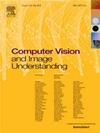亮度先验引导低光4C链线图像增强
IF 4.3
3区 计算机科学
Q2 COMPUTER SCIENCE, ARTIFICIAL INTELLIGENCE
引用次数: 0
摘要
在补光不足的情况下,铁路供电4C监控设备捕获的接触网图像经常出现弱光现象,这对准确检测设备异常构成了重大挑战。这反过来又影响到铁路系统的顺利运行、及时维修和整体安全保障。认识到这一关键问题,我们的研究引入了一种创新的双支路优先引导增强方法,专门针对通过供电4C监测设备获得的低光链线图像量身定制。在我们的方法的多尺度分支中,我们利用卷积神经网络(cnn)的强大功能以及自关注机制来有效地从图像中提取局部和全局特征。这种双重聚焦使我们的模型能够捕捉复杂的细节和更广泛的上下文信息,增强其理解和增强图像的能力。同时,我们的方法的逐像素分支被设计用于估计像素级的增强参数,实现自适应和迭代的增强过程。这种细粒度的方法确保图像中的每个像素都基于其独特的特征和上下文进行优化,从而实现更细致和准确的增强。为了进一步了解和约束我们的增强过程,我们对正常和低光条件下图像的平均光强进行了统计分析。通过检查这些不同光照条件下图像亮度之间的差异和相关性,我们得出了集成到我们方法中的统计先验。这些先验为我们的模型提供了有价值的指导,帮助它在增强过程中做出更明智的决策。此外,为了减轻与获取标记数据相关的挑战,我们采用了一种无监督模型训练策略。这种方法允许我们的方法学习和改进,而不需要广泛和昂贵的标记工作,使其在现实世界的应用中更加实用和可扩展。实验结果表明,与目前最先进的低光链线图像增强方法相比,我们提出的方法具有优越性。我们的方法提高了图像的视觉质量,最终有助于铁路运营的安全和效率。本文章由计算机程序翻译,如有差异,请以英文原文为准。
Luminance prior guided Low-Light 4C catenary image enhancement
In scenarios characterized by inadequate fill lighting, catenary images captured by railway power supply 4C monitoring equipment often exhibit a phenomenon of low light, which can pose significant challenges for accurately detecting anomalies in the equipment. This, in turn, has ramifications for the smooth operation, timely maintenance, and overall safety assurance of railway systems. Recognizing this critical issue, our study introduces an innovative dual-branch priori-guided enhancement method specifically tailored for low-light catenary images obtained through powered 4C monitoring equipment. Within the multi-scale branch of our method, we leverage the powerful capabilities of convolutional neural networks (CNNs) along with the self-attention mechanism to effectively extract both local and global features from the images. This dual focus allows our model to capture intricate details and broader contextual information, enhancing its ability to understand and enhance the images. Concurrently, the pixel-wise branch of our method is designed to estimate enhancement parameters at the pixel level, enabling an adaptive and iterative enhancement process. This fine-grained approach ensures that each pixel in the image is optimized based on its unique characteristics and context, leading to more nuanced and accurate enhancements. To further inform and constrain our enhancement process, we conduct a statistical analysis of the average light intensity of images under both normal and low-light conditions. By examining the differences and correlations between image brightness under these varying light conditions, we derive statistical priors that are integrated into our method. These priors serve as valuable guidance for our model, helping it to make more informed decisions during the enhancement process. Moreover, to mitigate the challenges associated with obtaining labeled data, we adopt an unsupervised model training strategy. This approach allows our method to learn and improve without the need for extensive and costly labeling efforts, making it more practical and scalable for real-world applications. Experimental results demonstrate the superiority of our proposed method when compared to state-of-the-art approaches for low-light catenary image enhancement. Our method improves the visual quality of the images, ultimately contributing to the safety and efficiency of railway operations.
求助全文
通过发布文献求助,成功后即可免费获取论文全文。
去求助
来源期刊

Computer Vision and Image Understanding
工程技术-工程:电子与电气
CiteScore
7.80
自引率
4.40%
发文量
112
审稿时长
79 days
期刊介绍:
The central focus of this journal is the computer analysis of pictorial information. Computer Vision and Image Understanding publishes papers covering all aspects of image analysis from the low-level, iconic processes of early vision to the high-level, symbolic processes of recognition and interpretation. A wide range of topics in the image understanding area is covered, including papers offering insights that differ from predominant views.
Research Areas Include:
• Theory
• Early vision
• Data structures and representations
• Shape
• Range
• Motion
• Matching and recognition
• Architecture and languages
• Vision systems
 求助内容:
求助内容: 应助结果提醒方式:
应助结果提醒方式:


